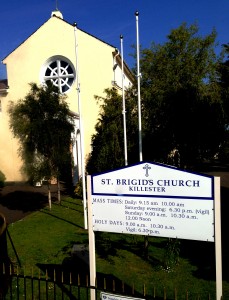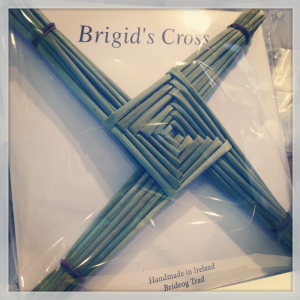Growing up in a family with a strong Irish heritage is a blessing for me. Through a tight bond, my family and I share old Irish traditions and cook Irish meals, but one of the most significant things we keep are belongings of our ancestors’ pasts—most being traditional handmade knick-knacks, and yes, crafts. Unlike my other experiences through this blog, this time I did not just stumble upon a craft that interested me—this time I sought it out. I got the idea when I begun to think about what is important and personal to my family and our heritage. I thought of these crafts, these special belongings we have around our home.
Ideas ran through my head of the different crafts we keep and the possibilities were wide. I couldn’t make a decision on which craft to search for. It didn’t come to me until a bus ride to Howth last week when I spot Saint Brigid’s Church through the window. This first caught my eye because of my first name, Brigid; but then I began to think about the Saint Brigid’s Cross hanging in our kitchen at home.
It is believed that the cross is a protector of the home from fire and evil and was originally made from straw. Saint Brigid is one of Ireland’s most significant female saints and was the supporter of doctors, midwives, healers, poets, and coincidentally, crafts. Her first weaving of the cross was at the death bed of her father. The cross is traditionally crafted every year on February 1st to celebrate the coming of early spring; February 1st is also Saint Brigid’s Day.
In a perfect world I would have found a workshop or a cross-maker to teach me to craft a cross; however, the tradition of the February 1st cross-making might dampen that idea. I did some research and I couldn’t find anything on workshops, but I wasn’t going to let that stop me. My mind was set on investigating this.
Earlier today, I arrived in Galway for the weekend. I walked through the small town and I noticed an outdoor craft market. As I was gazing at all of the amazing artwork, I saw a bunch of Saint Brigid’s crosses. A sense of warmth and happiness came upon me and I began talking to the woman behind the display, the artist. Her name is Ann and she hand-makes the crosses, along with other traditional Irish crafts.
Running into Ann in Galway turned out to be a stumble upon moment, yet again. Through our chat I learned how much traditional crafts are important to the Irish culture. Many still value trinkets and ornaments, not only for their beauty, but more importantly for their meaning and story behind them, just like Brigid’s Cross. Even Irish-Americans, such as members of my family, are helping keep the tradition alive by cherishing these sacred Irish crafts. Tradition is what ties us to our family trees and what connects us to our future generations.


